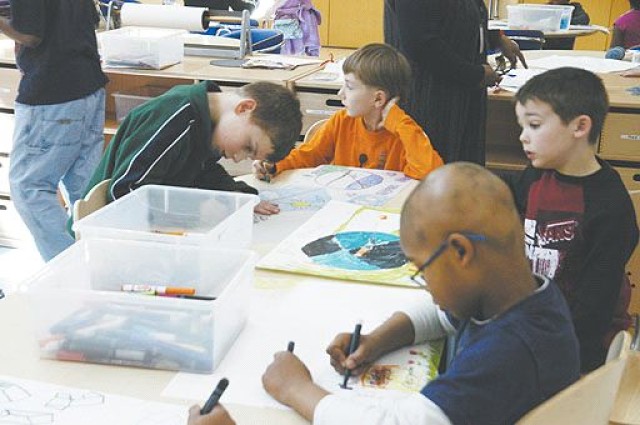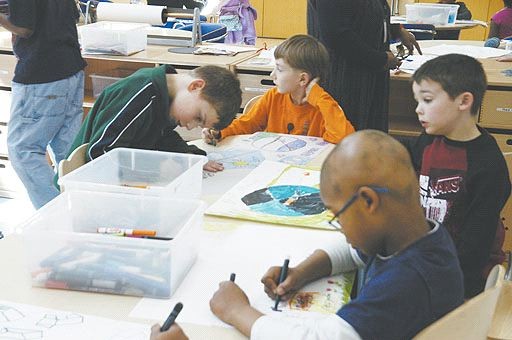The Directorate of Environmental Management and the Child Youth and School Services School Age Services taught children about environmental awareness April 6 through an open discussion forum and poster drawings.
''We want them to show us what they think are some of the problems with the environment as far as what people can do to prevent pollution and keeping the earth clean for future generations," said Wanda Gooden, environmental protection specialist.
Officials from DEM spoke to the children about recycling and reuse, explained the fragility of the ozone layer and described ways to keep the environment clean.
''When they first come in, and they've still got their thinking cap on, so to speak, we can get little ideas like that before we just kind of get them up and start moving around the place," Faye Green, SAS supervisory program lead said.
Children from ages five to 11 participated in the environmental event.
''When you're working with a lot of age groups, you kind of have to give them a thought behind why are we doing this' What is this all about' So we just kind of sit down and we talk to them about it. Sometimes these kids can have really good answers, you know for us as an adult on what we can do, but they can't all put it into words, they can express themselves in pictures," Green said.
The children had been working on the environmental project for a couple of weeks in preparation for Earth Day on April 22. ''DEM talked with the kids during the day as well," Green said.
''This is part of what we're celebrating on Earth Day, April 22. The posters that they're doing are going to be displayed during our exhibit for Earth Day at the community center April 21," Gooden said.
''It's teaching them about life, because now with this generation, we have to learn how to reuse and not destroy," Greene said.
The children were challenged with thinking about the things that they use and things that are created. ''How many times can we use it or how many different ways can we use it," Green said. The project required the children to be thrifty with the things that they do and how they do it.


Social Sharing